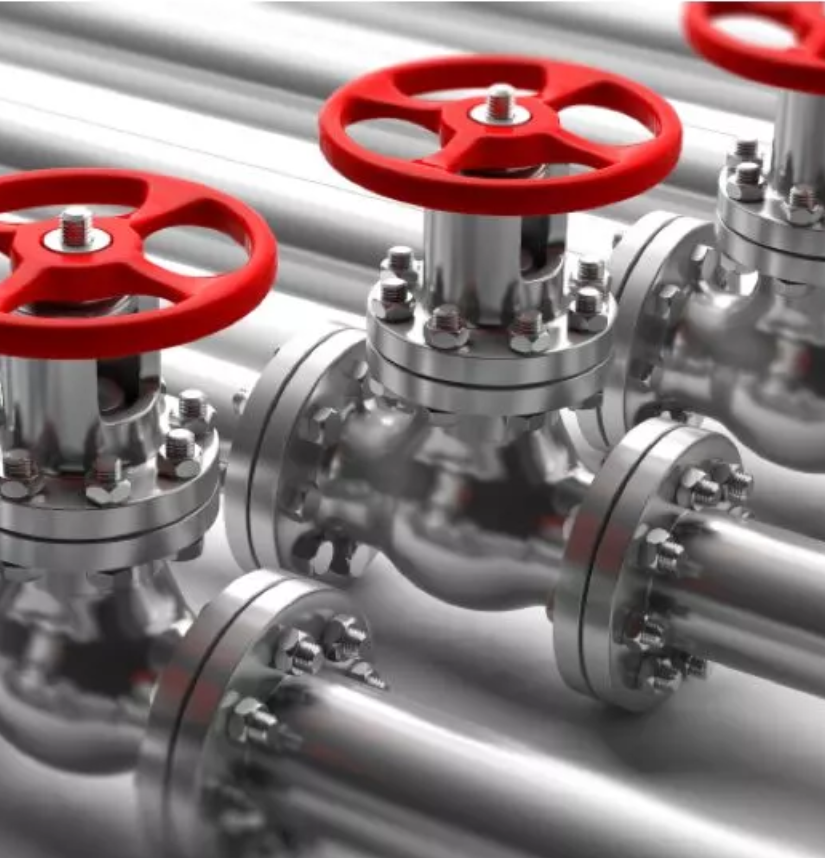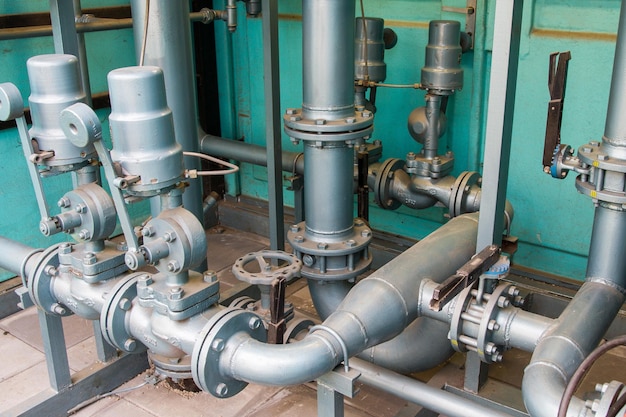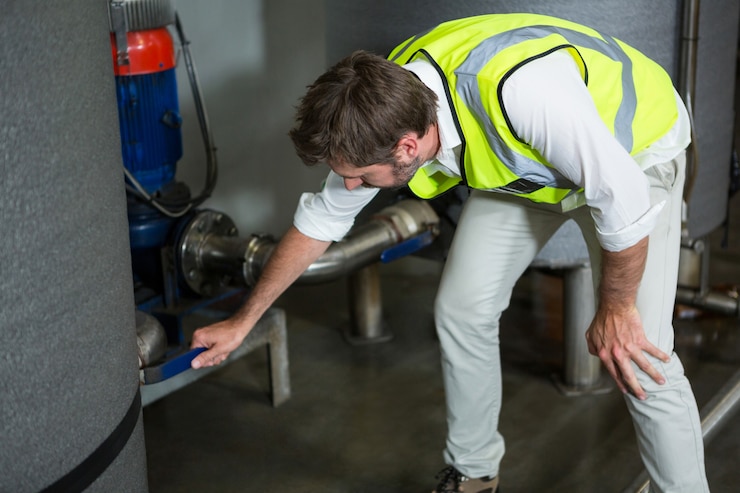The ability to control and regulate the amount of pressure present in a system is often essential for ensuring safe and effective functioning. Pressure regulators are used to managing fluid flow, enabling efficient and reliable control of various industrial processes.
In this article, an overview of the different types of pressure regulators available on the market will be provided, enabling the consumer to make an informed decision when purchasing one for their application.
What Are Pressure Regulators?

Pressure regulators are devices designed to reduce the pressure of a fluid or gas. They are one of the most important components used in a broad range of industrial applications, including boilers, pumps, water heaters, and HVAC systems. Pressure regulators are also commonly used in plumbing systems.
Pressure regulators operate by precisely controlling the flow of the pressurized fluid or gas so that it reaches the desired level of pressure at its destination. Once the designated level is reached, the regulator automatically stops the flow of the fluid or gas to prevent overpressure and damage to the system.
It also ensures that the pressure remains constant at all times, meaning the rate of flow is not affected by changes in ambient conditions.
The pressure regulator is an important component in various industrial applications and is supplied by industrial ball valve manufacturers. Industrial ball valve manufacturers design, develop, and produce industrial valves, including pressure regulators.
Gas Regulator Types

Gas regulators come in many different designs, sizes, and materials, allowing them to be used in virtually any situation. There are several types of gas regulators available on the market, including:
Pressure Reducing Regulators
Pressure reducing regulators are devices that lessen the pressure of a gas or vapor in a system and keep that pressure constant across varying flows. They are used in industrial and commercial applications to ensure that the supply pressure is regulated to the desired lower level regardless of dynamic conditions.
works by adjusting an adjustable restriction orifice located within the device itself to restrict the flow of fluid passing through it. This restricts the pressure and volume into the downstream side of the regulator.
Common applications for these devices include water, air, and steam systems in commercial buildings, as well as industrial processes.
Single Stage Regulator
One of the gas regulator types that regulates the pressure in one step. It reduces the high inlet pressure from the gas source to a lower, usable outlet pressure for an appliance or system.
Single stage regulators are simple in design and often used for small, low-pressure gas systems. They are suitable for applications where the gas flow is constant and changes in demand are minimal.
However, they may not provide a consistent outlet pressure as the inlet pressure fluctuates, and they are not ideal for applications with high flow demands.
Two Stage Regulator
A two stage regulator is a type of gas regulator that regulates the pressure in two steps. Unlike a single stage regulator, which adjusts the pressure in one step, a two stage regulator provides a more consistent outlet pressure by breaking down the regulation process into two stages.
The first stage reduces the high inlet pressure to an intermediate pressure, while the second stage reduces the intermediate pressure to the final, usable outlet pressure.
This two-stage process helps to stabilize the outlet pressure and makes the regulator more suitable for applications with high flow demands or fluctuations in inlet pressure. Two stage regulators are commonly used in industrial and commercial gas systems.
Back Pressure Regulator
It is a type of gas regulator that regulates the pressure by sensing the pressure upstream of the regulator and adjusting the output to maintain a constant set point.
These types of pressure regulators are commonly used in applications where the downstream pressure needs to be controlled and maintained, such as in process control systems, or where the back pressure is used to regulate the flow of the gas.
Pressure Relief Regulator
A pressure relief regulator is a type of pressure control device that automatically relieves excess pressure in a system by opening a relief valve to allow the release of excess fluid or gas.
Aside from the relief valves, butterfly valves can be also incorporated into this system to regulate the flow rate into the pressure relief regulator, which then maintains a safe and consistent pressure within the system and protects it from overpressure damage.
Pressure relief regulators and butterfly valves are commonly used together in industrial and commercial applications, such as plumbing, HVAC, and process control systems, to provide a safe and efficient solution for controlling fluid or gas pressure
Electrically Controlled Regulator
This type of regulator typically uses an electrical signal to activate a control element, such as a solenoid valve or a motor-driven actuator, which adjusts the flow rate to maintain the desired pressure within the system.
They offer advantages over mechanically controlled regulators, such as faster response times and remote control capabilities.
Domestic Regulator
Domestic regulators typically have a spring-loaded mechanism that adjusts the flow rate to maintain the desired pressure.
They are designed to be easy to install and maintain and are commonly used in conjunction with gas meters and gas piping systems.
On the other note there are also a number of natural gas regulator types that can be used to control the flow of natural gas in various platforms. The most commonly used types of natural gas regulators include adjustable-pressure regulators, diaphragm-operated regulators, pilot-operated regulators, and back-pressure regulators.
How to Choose the Right Gas Regulator Types

When choosing the right gas regulator types, there are several considerations to keep in mind.
Type of Gas
Different types of gasses have different characteristics, such as flow rate, pressure range, and corrosiveness, and it is important to choose a regulator that is designed to handle every consumer’s specific gas. If the wrong regulator is used, it can lead to safety concerns and system malfunctions.
Flow Rate
The flow rate of the gas will determine the size and capacity of the regulator required. It is important to choose a regulator that can handle the maximum flow rate that consumer will expect, while also providing accurate control at lower flow rates.
Pressure Range
The pressure range of the regulator should be compatible with the inlet and outlet pressures of each consumer’s system. It is important to choose a regulator that can handle the maximum inlet pressure, while also providing stable and accurate control at lower pressures.
Environment
The environment in which the regulator will be used, such as temperature, humidity, and exposure to corrosives, can affect its performance and durability. It is important to choose a regulator that is designed for the specific conditions in which it will be used.
When selecting a regulator for a specific application, it is critical to take into account all of these environmental factors in order to ensure that the device is properly equipped to perform at its best.
Ease of Maintenance
The ease of maintenance of the regulator is also an important factor to consider when selecting a regulator for either industrial or commercial application. Some industrial valve company offer a wide range of regulators designed for easy maintenance and repair, so it is important to choose a product from a reputable and experienced manufacturer.
By choosing a regulator that can be easily maintained and repaired, if necessary, consumers can ensure its long-term performance and reliability, and avoid costly downtime and maintenance issues in operations.
Accuracy and Stability
The accuracy and stability of the regulator are important factors to consider, especially if precise pressure control is required. It is important to choose a regulator that provides consistent pressure control, even in the presence of fluctuations in inlet pressure.
This means that the regulator must accurately detect the changes in the pressure and adjust accordingly to ensure that the output pressure remains unchanged
Additionally, the regulator must maintain its ability to control the pressure even over extended periods of time with minimal or no drift in pressure control accuracy
Cost
The cost of the regulator will be an important factor in every consumer’s decision, especially if cost is a concern. It is important to choose a regulator that provides the performance and features needed, while also being cost-effective.
Additionally, depending on how often the regulator will be used, consumers may want to look into purchasing a higher-quality model that comes with longer warranties or more features, as this could save money in the long run.
Conclusion
Pressure regulators provide an effective way of controlling and regulating fluid or gas pressure in various industrial applications. Different types of regulators are available on the market, including pressure reducing, single stage, two stage, back pressure, pressure relief, electrically controlled, and domestic regulators.
Industrial valves are an essential part of the pressure regulator, when choosing the right types of pressure regulators for applications, it is important to consider the type of gas, flow rate, pressure range, environment, ease of maintenance, accuracy, and stability as well as cost. The use of quality industrial valves in conjunction with a pressure regulator helps to ensure that the system operates safely, efficiently, and effectively in a wide range of industrial applications.
DomBor is a leading China industrial valve company that provides a diverse range of high-quality pressure regulators that are customized to the requirements of various industrial applications. The company’s regulators are engineered to deliver reliable performance, durability, and precision, and are backed by extensive testing and quality control measures.
With a commitment to customer satisfaction and a proven track record of delivering high-quality products, DomBor is a trusted and reliable choice for industrial valve and pressure regulator solutions. Contact Dombor now for expert advice in choosing the right pressure regulator for any application!









